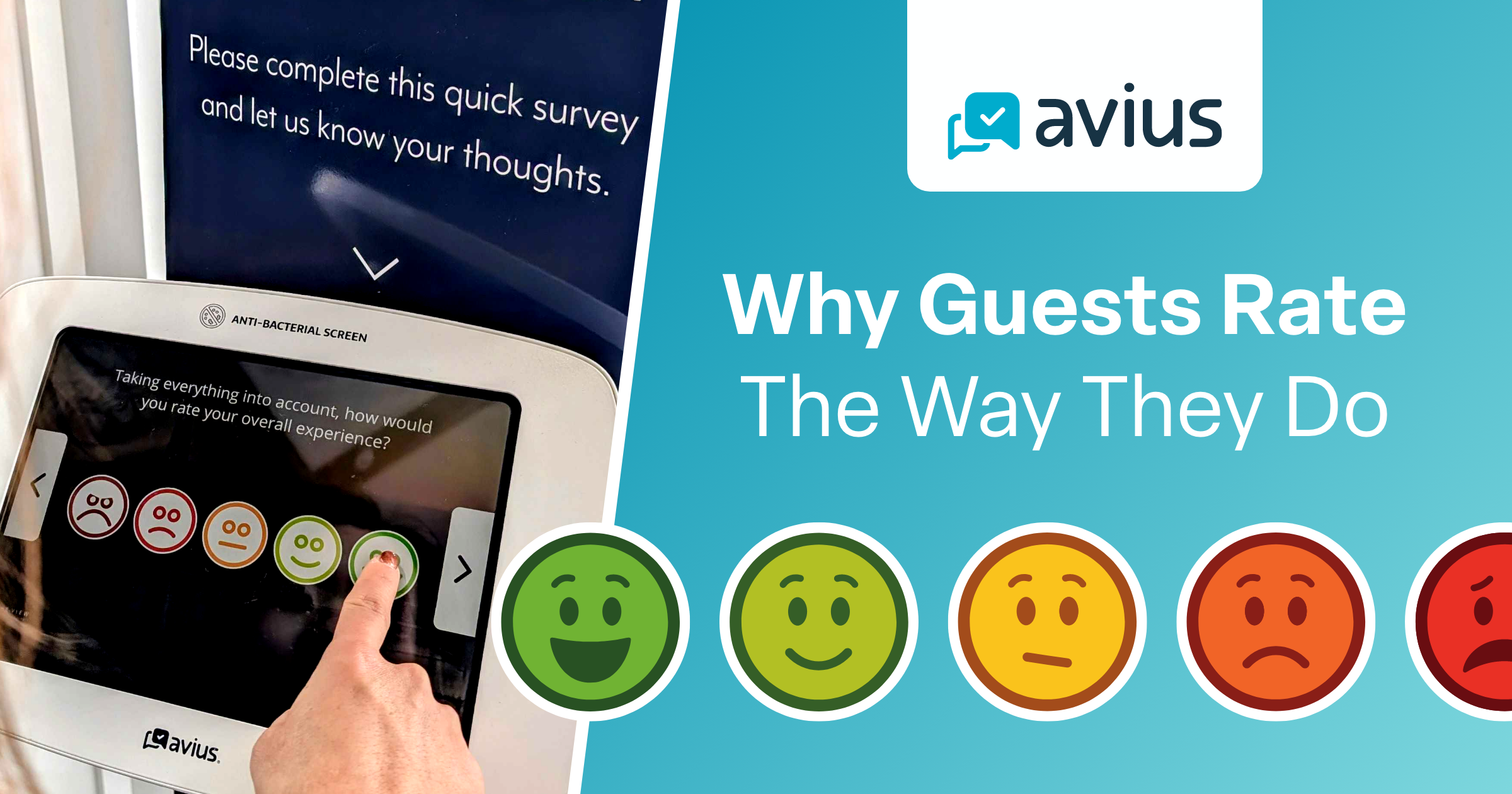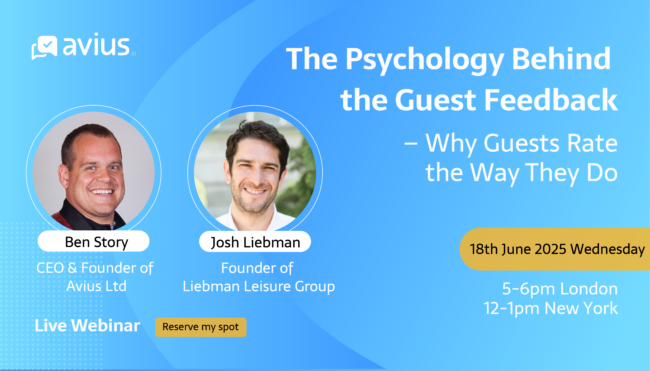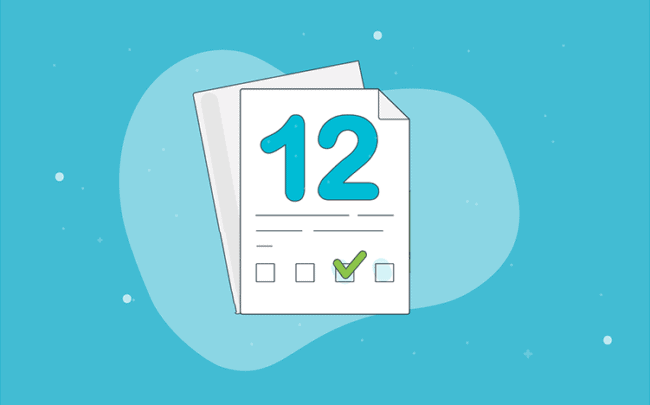Why People Rate the Way They Do
When a guest leaves a smiley face on a feedback screen, what’s really driving that moment? Are they thinking about the perfect day they’ve just had, or maybe the long queue they endured an hour ago?
At Avius, we’ve spent over two decades exploring what shapes feedback in the moment. Drawing on millions of data points across airports, attractions, and hospitality venues worldwide, we’ve found that emotions, expectations, and even small moments of recovery play a far bigger role than most realise.
Let’s unpack a few of the key psychological triggers behind guest feedback and how understanding them can help turn simple ratings into powerful insight.
1. The “Peak-End Rule”: How Memories Shape Ratings
Guests don’t remember every detail of their visit. Instead, they remember the emotional peaks and how it ended. This psychological principle, known as the Peak-End Rule, means that a few moments can define the entire experience.
Think of a Disney park’s fireworks finale. Beyond the spectacle, it’s a clever emotional strategy: ending on a high point ensures guests leave feeling uplifted, even if there were hiccups earlier in the day. Universal Orlando uses a similar tactic, with teams of staff waving guests goodbye at the gates to leave a lasting emotional impression.
The opposite can be true too. A great day at a theme park can quickly turn sour if the last memory is paying a frustrating parking fee on the way out. For airports, it might be a long line at exit barriers.
Avius data supports this idea: when we help clients collect feedback throughout the experience, we often see clear emotional peaks, points where satisfaction spikes, that can be replicated elsewhere in the journey. Even small, intentional gestures like adding street performers during busy times or positioning staff for a friendly farewell can shift how guests remember their day.
2. Managing Expectations: The Experience Starts Before Arrival
Guest satisfaction doesn’t start at the gate, it begins the moment someone decides to visit.
Avius research shows that over half (51%) of guests rate their experience better than expected. And those guests are also far more likely to recommend and return. But that means the other half arrived with expectations that were either met or missed.
This pre-visit phase, researching online, reading reviews, browsing the website — sets the tone. Attractions must balance marketing hype with operational delivery. As guest experience expert Josh Liebman puts it, “You can’t under-promise and over-deliver if you want to win business — but you can be intentional about how you exceed those promises.”
Epic Universe, the new Orlando theme park, is a great case study. With years of hype and sky-high expectations, the team had to ensure the experience surpassed the buzz. By contrast, when guests approach a more low-key attraction with modest expectations and are pleasantly surprised, their satisfaction often skyrockets — what we call the “DMV effect.”
The takeaway? Be bold in setting expectations, but just as bold in planning how to meet and exceed them, from queue design to staffing to pre-visit communication.
3. First Impressions and the Power of Recovery
It’s a cliché because it’s true: you never get a second chance to make a first impression.
Mystery shop data shows that guests who rate their first impression as “excellent” go on to rate the entire experience an average of 4.9 out of 5, while those with a poor start rarely rise above 3.0 — even if the rest of their visit improves.
Weather, queues, or confusion at entry can easily derail those early moments, but recovery is just as powerful. Disney’s “rainy day parades” are a perfect example: turning what could be a disappointment into something delightfully memorable.
We’ve seen similar thinking in airports. At Hartsfield–Jackson Atlanta International Airport, Avius feedback kiosks capture up to 11,000 surveys a day across more than 100 restrooms and restaurants. Early on, staff were hesitant about passenger feedback, but over time, they saw how real-time data improved their performance scores by over 10%, proving that guests notice proactive communication and genuine care, even when the situation isn’t perfect.
That same principle drives what psychologists call the “Service Recovery Paradox” — when a problem, handled well, actually leads to higher satisfaction than if nothing had gone wrong.
4. Demographics, Culture, and the “Rating Personality”
Not all guests score the same way.
Avius data from millions of surveys shows that the most vocal group tends to be ages 35–44, often parents with young children. They’re planners, decision-makers, and storytellers — and their expectations (and frustrations) often shape family perceptions of value for money.
But even geography matters.
- American guests tend to rate experiences more generously — if something meets expectations, they’ll happily give a 10/10.
- European guests, however, often reserve perfect scores for “Michelin-star” excellence. A 4/5 might actually mean “this was amazing.”
- APAC guests often begin with very high expectations and start their day at 100% — satisfaction must be actively maintained, not just built.
For operators, this means tracking trends over time is far more valuable than chasing arbitrary score targets. A four-star average might signal exceptional performance, depending on who your audience is.
5. Should You Incentivize Feedback?
Everyone wants more responses, but incentives can be tricky.
Offering a prize draw (“Win an annual pass!”) can unconsciously skew data — guests may feel their odds are better if they rate more positively. A guaranteed incentive, however, like “Fill out this survey for £5 off your next purchase,” tends to produce far more authentic results.
At Avius, we often recommend guaranteed incentives when customer feedback is collected on-site or immediately post-visit — particularly in retail or airport settings where it can tie into secondary spend.
And don’t forget your team. Incentivizing staff for feedback quality — not just volume — can drive stronger, more meaningful guest interactions. Recognition, when based on genuine reviews, reinforces authentic service rather than scripted solicitation.
6. The Evolving Role of AI and Authentic Feedback
AI is beginning to reshape both how guests leave feedback and how operators interpret it. While some reviews might now be machine-written, AI also helps detect patterns, identify authenticity, and even craft consistent response tone at scale.
The golden rule: use AI as an amplifier, not a replacement for empathy.
Guests can tell when a response is heartfelt — and when it’s copy-pasted. In an age of automation, the most human responses still stand out.
Final Thoughts
Every smiley face, comment, and score is more than data — it’s a reflection of emotion, expectation, and memory.
The best organisations treat customer feedback not as a post-visit formality but as an ongoing conversation — one that happens in the moment, across every touchpoint.
As Avius CEO Ben Story often says,
“Feedback is your wellspring for continuous improvement. Every single guest should have the opportunity to be heard.”
When guests feel seen and valued, they don’t just rate you higher — they return, they recommend, and they become your strongest advocates.
Watch the webinar
Guest feedback isn’t just a score — it’s a reflection of emotion, expectation, and memory. The more we understand the psychology behind it, the better we can design experiences that inspire loyalty and advocacy.
To dive deeper into this topic, Avius CEO Ben Story and guest experience strategist Josh Liebman hosted a webinar unpacking the psychology behind guest feedback — exploring real-world examples, live data insights, and the emotional triggers that shape how people rate their experiences.
Watch the full webinar: “The Psychology Behind Guest Feedback – Why Guests Rate the Way They Do.”


